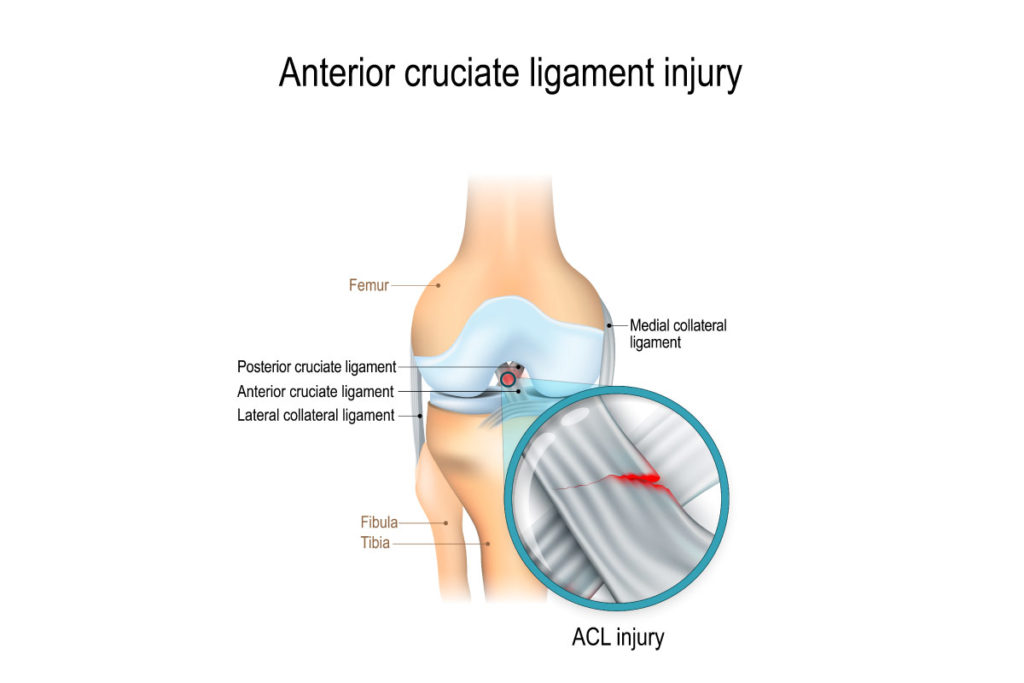Do you have an ACL tear? Then you’ve suffered through enough pain already. Surgery is not only expensive, but it also generally takes a minimum of nine months to recover, and even then, your knee will never be quite the same again and your risk of a repeated injury or an injury in the opposite knee is increased. But you do have another option. Let’s talk about it.
Experiencing Knee Pain? Learn More About Our Treatment Options
The ACL (anterior cruciate ligament) is a major stabilizer of the knee. A strain or a slight tear may heal over time with rest, a doctor’s help, and physical therapy but traditional thought says a complete tear requires surgery. This surgery is not only expensive and invasive as it requires a grafted ligament from elsewhere in the body (i.e. the hamstring), but the grafted ligament goes in at a steeper angle than the original ACL, which causes more compression on the cartilage. Because of this, it is estimated that individuals who undergo ACL reconstructive surgery have a 3-5 times greater risk of developing posttraumatic arthritis of the knee; one study even showed that two-thirds of teenagers who replaced the ligament were diagnosed with arthritis by the time they were 30. Also, because of the extensive rest period surgery requires, an athlete who has suffered an ACL tear would be lucky to be at 50% of where they were before the injury. 
The ACL stabilizes the knee, so an injury makes even simple tasks difficult.
So how can you avoid the downtime and potential arthritis? The answer lies inside your body. Adult stem cells come from your own body—they renew themselves and turn into other cells when other cells are damaged. They live inside various tissues and are meant to repair damage as it occurs. Stem cell procedures extract the cells from areas of high concentration (i.e. bone marrow) and reinject them into the damaged area (in this case, the knee) to help the body heal naturally.
The procedure usually occurs over the course of one day, but every patient and injury is different. First, a local anesthetic is applied, allowing the doctor to draw bone marrow from the hip. This process is significantly less invasive than a bone marrow biopsy or a grafting process. After 3-6 hours, the stem cells are ready to be re-injected into the body. This fluoroscopic, ultrasound-guided injection usually takes 40-60 minutes and patients may be asked to stay in the clinic for a while after the reinjection.
Results, of course, vary by patient, but most patients can resume light activities and begin physical therapy within 7 days; for younger patients, we usually see maximum ligament repair in 3-6 months.
You will notice that stem cell therapy allows for increased functionality and pain reduction faster than surgery, allowing the patient minimal disruption of the regular routine. And, because there’s no surgery, there is minimal need for mobility tools like crutches.
70% of ACL tears can be more reliably treated without surgery—you just need to be willing to put your body’s natural healing agents to work for you. If you’ve had an ACL injury, consider the Regenexx procedure.


